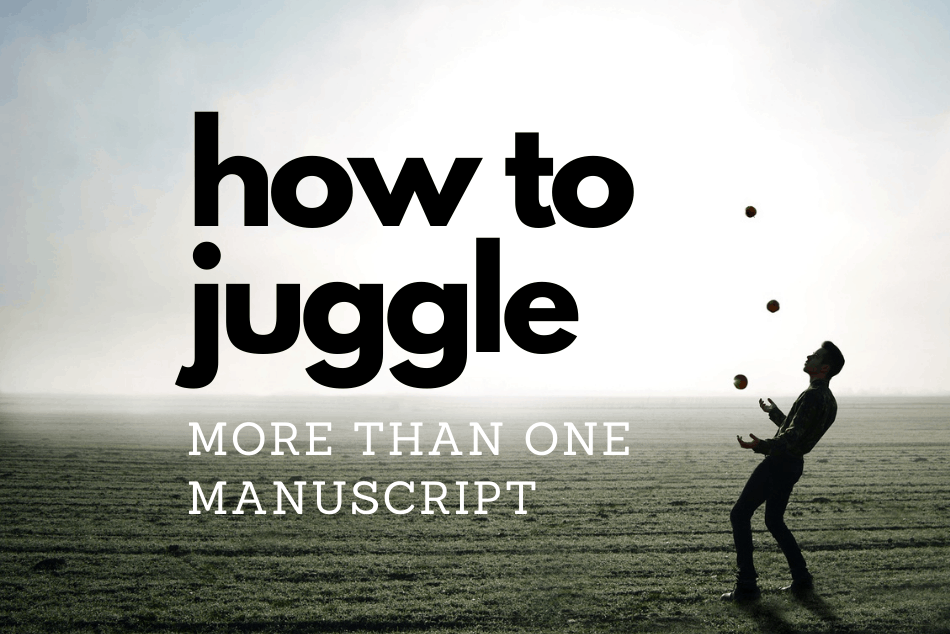by Hazel Gaynor and Heather Webb
How often have you been asked by family and friends how your book is going? How often do you stall before you answer, trying to discern which book they mean—the exciting new one you’re currently researching and drafting, or the one you’re painstakingly copy-editing? Maybe they mean the one just published, or the backlist title on a Kindle promo? Or are they, in fact, just being polite, and actually want you to refill their wine glass and never mention your books again?
The answer is probably all of these things!
Debut authors experience the thrill and excitement of realizing a dream. Career authors experience the ups and downs of expanding that dream.
This means being flexible, often being brave, and always working damned hard to stay relevant and keep selling books.
As novelists who juggle our own individual careers in historical fiction, while also working as a co-writing team (from opposite sides of the Atlantic, no less!), we have a lot of experience with the fine art of keeping many literary plates successfully spinning. Here’s an honest look at the biggest challenges for successfully working on multiple projects at different stages of the writing and publishing process, followed by some of our best tips for rising above them.
Project Overlaps
Establishing a successful writing career means there will be overlaps in timing. The most common overlap is promoting a just-published book that you finished writing a year or more ago, while simultaneously working on your next project under a tight deadline. We’re forced to switch between the intense introverted writer, deep in the realms of drafting and creating, and the gregarious confident extrovert who dazzles at launch parties and conferences and events. It isn’t easy, and it’s often exhausting! Promotion and book tours can deplete reserves of creativity very quickly. The best way to manage this overlap requires us to fiercely protect our writing time (and our energy) between promo events. The best way to do that?
Create a schedule, including promo time, writing time, and rest.
Don’t forget the rest! This will ensure you’re retaining balance while also keeping the next project on track. Remember to call on the team if it’s all too overwhelming. Your agent and editor are excellent resources–but hit them up sooner rather than later.
Multiplicity
Remember the 1990s movie Multiplicity where Michael Keaton’s body is replicated a bunch of times? There are moments—especially while editing some projects and drafting others—when the issue of replication interferes and all of the character voices in our heads become tangled, or begin to bleed from one story into the next.
When this endangers our ability to distinguish our protagonists from one another, both in the emotional tenor of the story and in their voices, it might mean we need to press pause. Finish one project first, rather than co-managing both. Or, try this:
Do a quick warm-up exercise, journaling in your character’s voice for ten minutes before you start writing.
This can work well after any writing break, helping us step back into the shoes of the protagonist on the page to maintain their uniqueness.
Dedicated Time
One thing we have to work on as a co-writing team is being honest about what we can accomplish in the allotted time each project needs.
It’s easy to look at a calendar and overestimate what’s possible, and then feel backed into a corner where stress breaks down the creative fuel that’s so important to our writing.
If you aren’t working under deadline, this is much easier—but are we ever not working under deadline, either self-imposed, or assigned contractually? Sometimes it makes sense to work on one project for two to three days at a time to stay “in the right headspace,” then switch. The drawback to this is that there is always a bit of required reacquainting with the characters and the story.
Another approach is to work for two hours on one project in the morning, take a break doing something non-writing related, and then work for a couple of hours on the other project. It’s all about who you are as a writer. Whichever approach works for you, make sure to set goals and deadlines to keep all of your projects on track.
Manuscript Fatigue
For us, alleviating manuscript fatigue is one of the most beneficial parts of working on more than one book at a time, either through co-writing or through multiple solo projects. We come back to a project with fresh eyes and feel invigorated if we’ve let it rest for a few days while working on something else. This pause also gives our brains a chance to subconsciously work through sticky plot and character issues we may be having.
The subconscious mind is a powerful tool and the struggling writer’s ally!
The Pressure Gauge
Another great thing about juggling multiple projects is that it frees us from putting so much pressure on one single thing. If Project A doesn’t turn out the way we’d hoped, it might not be the disaster we would otherwise catastrophize it into.
As writers we tend to put a lot of pressure on ourselves to create the most amazing, original, exquisitely written, fiendishly plotted thing ever with each project we work on, and while that’s certainly something to aim for, it leaves a lot of room for crushed hopes and disappointment.
If you know that this is one project of many you have in the pipeline for the next few years, if you know that you’re striving to stretch and grow and do better next time—each time—it eases the pressure, and may allow you to go deeper, to have more fun with your current works-in-progress. Isn’t that why we started this gig, after all?
Co-Marketing
Writing is, by its nature, a solitary process, but that doesn’t mean it has to be a lonely process. Working on a collaborative project or two (co-writing, or contributing to an anthology, for example), means there’s a terrific opportunity to market and promote your work with other authors. We can expand our audience significantly this way. Through our experience of co-writing, we’ve had the opportunity to speak at multi-author panel events and book talks, which can be a lot more fun than going solo! This, again, releases the pressure valve. We’ve found this aspect of collaborative work incredibly rewarding—and also wonderful for our craft.
As they say, getting published is hard but staying published is harder. So, the next time you’re asked “How’s the book going?” take a deep breath, remember everything you’ve already achieved and everything you still want to achieve, and say, “They’re all going great, thanks. Who’s for more wine?”
Cheers to that!
 Heather Webb (right) is the USA Today bestselling and award-winning author of seven historical novels. Heather’s new solo novel coming in Feb 2022, The Next Ship Home, is inspired by true events and reveals the dark secrets of Ellis Island as two unlikely friends challenge a corrupt system, altering their fate and the lives of the immigrants that come after them.
Heather Webb (right) is the USA Today bestselling and award-winning author of seven historical novels. Heather’s new solo novel coming in Feb 2022, The Next Ship Home, is inspired by true events and reveals the dark secrets of Ellis Island as two unlikely friends challenge a corrupt system, altering their fate and the lives of the immigrants that come after them.
Hazel Gaynor (left) is an award-winning New York Times, USA Today, Irish Times and internationally bestselling author of 10 novels. Her most recent publication, When We Were Young & Brave, set in China during WW2, was a national bestseller in the USA and was shortlisted for the 2020 Irish Book Awards.
 Hazel and Heather’s co-written novels have all been published to critical acclaim. Last Christmas in Paris won the 2018 Women’s Fiction Writers Association Star Award, and Meet Me in Monaco was shortlisted for the 2020 Romantic Novelists’ Association Historical Novel award. Their latest, Three Words for Goodbye is a coming-of-age novel in which estranged sisters, Clara and Madeleine Sommers, travel across pre-WW2 Europe to fulfill their dying grandmother’s last wish. It will be published in the USA and Canada in July, and in the UK and Ireland in September.
Hazel and Heather’s co-written novels have all been published to critical acclaim. Last Christmas in Paris won the 2018 Women’s Fiction Writers Association Star Award, and Meet Me in Monaco was shortlisted for the 2020 Romantic Novelists’ Association Historical Novel award. Their latest, Three Words for Goodbye is a coming-of-age novel in which estranged sisters, Clara and Madeleine Sommers, travel across pre-WW2 Europe to fulfill their dying grandmother’s last wish. It will be published in the USA and Canada in July, and in the UK and Ireland in September.





